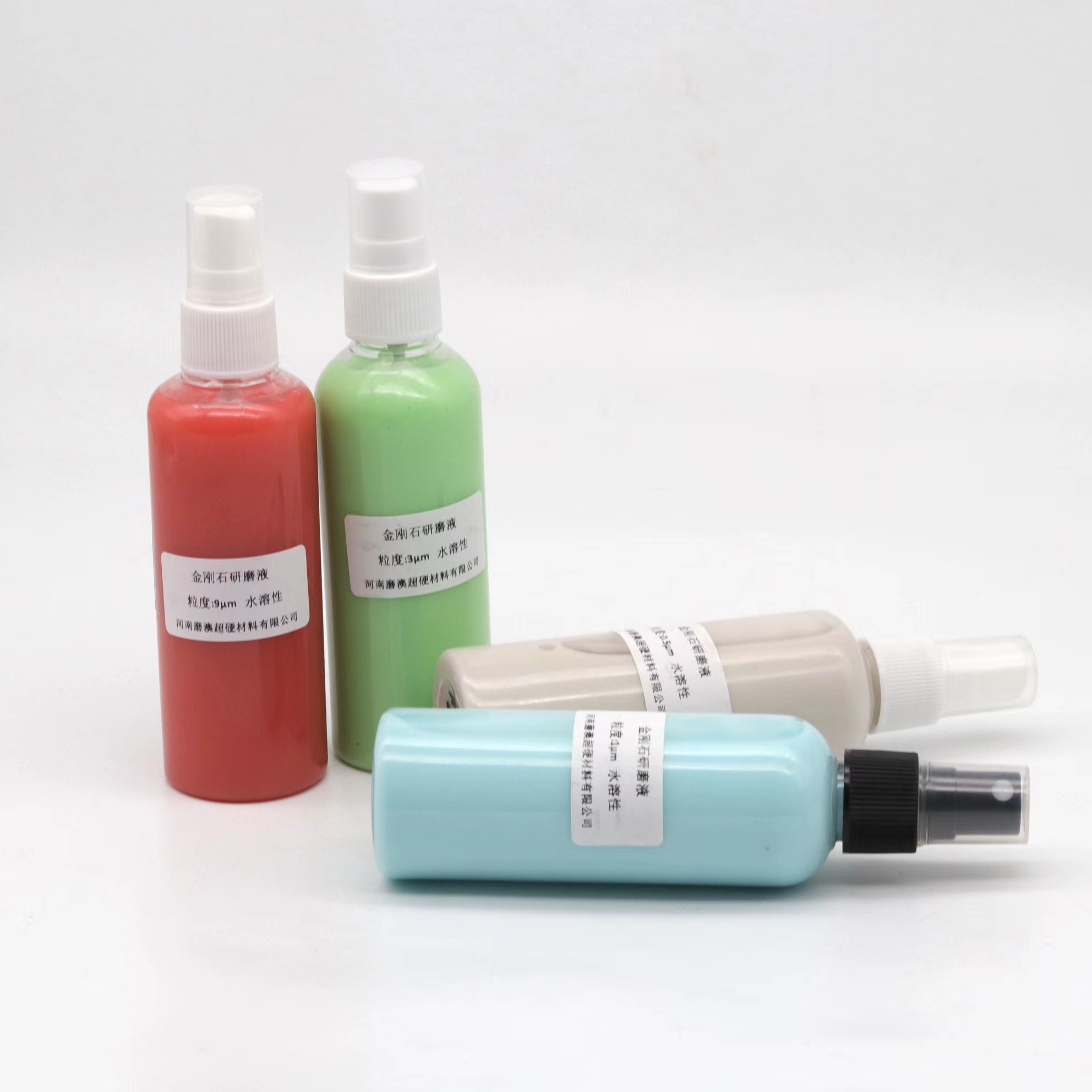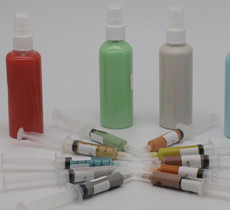What is diamond polishing paste used for?
Diamond polishing paste and lapping solution are mainly used for carbide tooling, metallurgy, ceramics, carbide seals, glasses glass industry and polishing diamond. Most of the polishing pastes are used for polishing on hand-held small tools, while the polishing liquids are used on polishing machines.
.jpg)
The three simple words "cutting, grinding and polishing" cover almost the whole abrasives industry. In the past, the domestic manufacturing industry put a lot of energy on "cutting" and "grinding", because the industrial level was limited at that time, and the precision requirement for processing was not high, of course, not to mention the finish. At the same time, as the polishing technology has high requirements for diamond raw materials, it needs to crush the diamond to within 10μm particle size, and also to maintain good strength, which also puts forward high requirements for diamond raw materials manufacturers.
Nowadays, with the rapid development of domestic industry, manufacturers are demanding more and more precision and also paying more and more attention to the appearance quality of their products. So the role of polishing is now particularly important. It has brought new challenges and new opportunities for the abrasives industry.
Under such circumstances, abrasives focuses on promoting diamond grinding fluid and grinding paste products to provide high quality and stable grinding and polishing solutions for companies pursuing higher precision processing.
Diamond Grinding Paste
 What is diamond grinding paste?
Diamond grinding paste
What is diamond grinding paste?
Diamond grinding paste is a soft abrasive made of diamond micro-powder and paste bonding agent, which is commonly used to grind hard and brittle materials to obtain high surface finish. Diamond grinding process plays an abrasive role, the particle size range is generally in W40~W0.5, according to the requirements of the finish of the grinding workpiece is selected, from coarse to fine can be used for grinding, fine grinding, polishing, fine polishing, and finally can be out of the mirror effect.
According to the solvent distinction can be divided into water-soluble abrasive paste and oil-soluble abrasive paste.
-Water-soluble with small viscosity, easy to drain, good cleaning, high processing efficiency, mainly used for processing hard materials, circuit boards, glass, ceramics, gemstones and other hard and brittle products.
-Oil-soluble abrasive paste has good wettability, low grinding force and grinding heat, mainly used for processing high hard alloy materials such as abrasives and gauges.
According to the different diamond micropowder used, it can be divided into single crystal diamond grinding paste, polycrystalline diamond grinding paste, etc.
-Monocrystalline diamond micropowder is made by ball grinding, grading and purification of high strength diamond in strict process. Monocrystalline diamond grinding paste has good cutting power and low processing cost, application areas include precision parts processing, mold processing, optical glass, metallographic specimen polishing, etc.
-Polycrystalline diamond micropowder is made by unique directional blasting method, there are many small particles of nanometer level in one micropowder particle, good self-sharpening and higher processing efficiency, but it is more expensive. Polycrystalline diamond grinding paste takes polycrystalline diamond micropowder as the main abrasive, with the help of polycrystalline structure of diamond, new cutting edge is formed continuously during use, high processing efficiency, mainly used in chip optical crystal fine processing, It is mainly used for chip optical crystal fine processing, wafer processing, etc. Polycrystalline diamond grinding paste can obtain finer surface than single crystal diamond grinding paste with the same particle size.
Diamond Grinding Fluids

Diamond abrasives are divided into monocrystalline diamond, polycrystalline diamond and nano diamond abrasives according to the type of diamond.
- Monocrystalline diamond has higher hardness and excellent wear resistance, so monocrystalline diamond grinding fluid has good cutting power and machining life.
- Polycrystalline diamond has more crystal ribs and grinding surfaces, which will break up into many smaller particles during grinding. Therefore, polycrystalline diamond grinding fluids can bring better surface finish and less scratching to the workpiece while maintaining good cutting power.
-Nanodiamond is made by the explosion method, which can achieve ultra-precision and ultra-high surface quality machining due to its special spherical shape and ultra-fine particle size.
Diamond lapping fluids are divided into water-based lapping fluids, oil-based lapping fluids and general-purpose lapping fluids according to the different dispersion media.
- Water-based lapping fluids have low viscosity, easy chip removal and good cooling effect. It is environmentally friendly, does not contain harmful substances, does not irritate the skin and does not pollute the environment.
- Oil-based lapping fluid has good wettability, fast grinding speed, high efficiency, good rust prevention, and not easy to react with the workpiece by oxidation.
- Universal abrasive fluids have the characteristics of both water-based and oil-based abrasive fluids, and are widely used in various processing situations.
Moresuperhard is committed to providing innovative and efficient "cutting, grinding and polishing" solutions for various industries. Polishing is an important step for higher precision and surface quality in grinding, and we always focus on the development and promotion of polishing products, aiming to bring more possibilities of high efficiency, high precision and high finish super finishing for customers in various industries. Coarse abrasive grain, high efficiency, low finish; fine abrasive grain, low efficiency, high finish. Therefore, in actual use, you can choose more suitable abrasive paste and abrasive solution for different material devices and process requirements, usually in the processing process, in addition to choosing the suitable model, there is also attention not to mix the use of different grain size tools, so as not to cause damage to the workpiece.
---EDITOR: Yun Li,Jackie Wang
---POST: Jackie Wang

.jpg)






